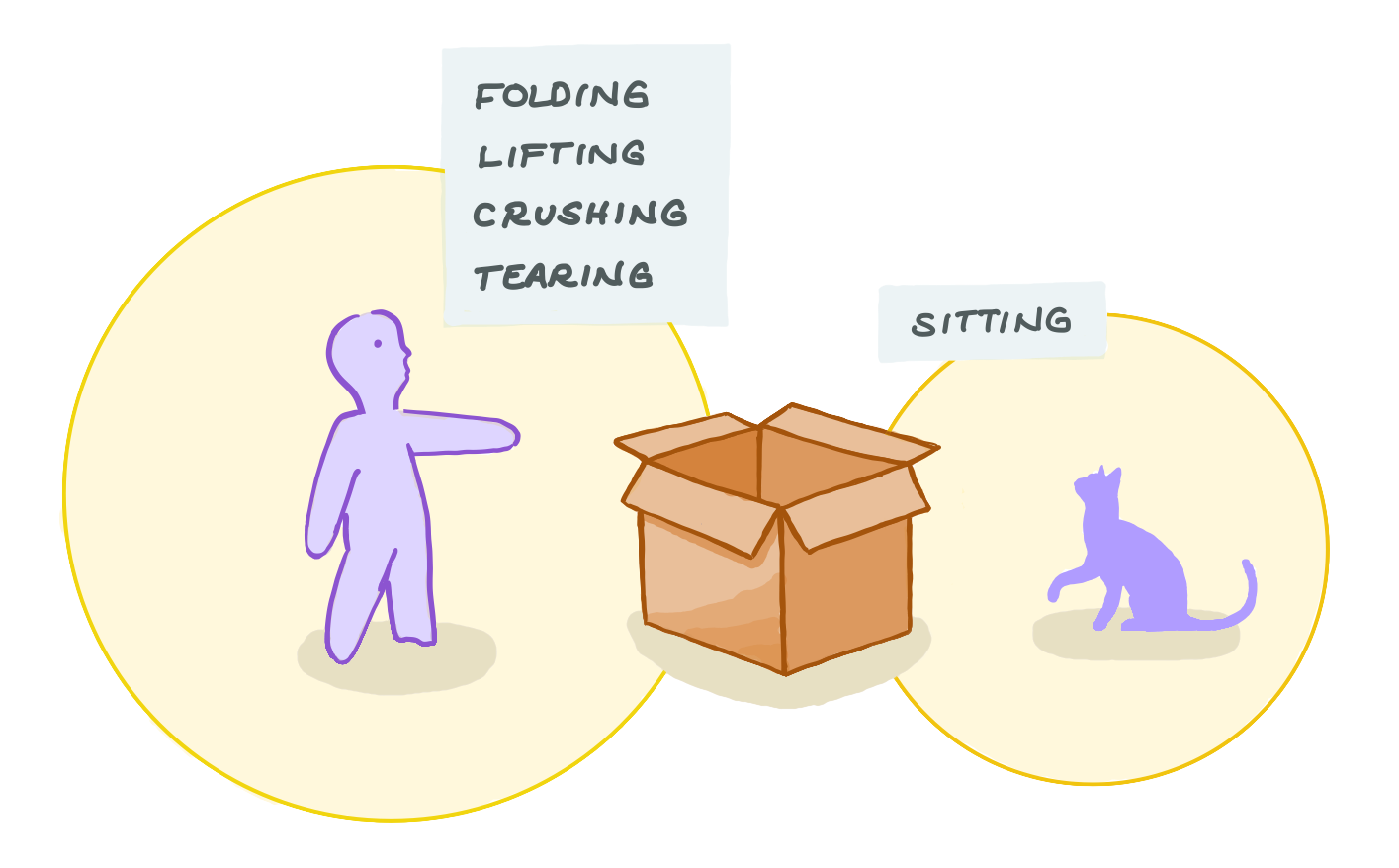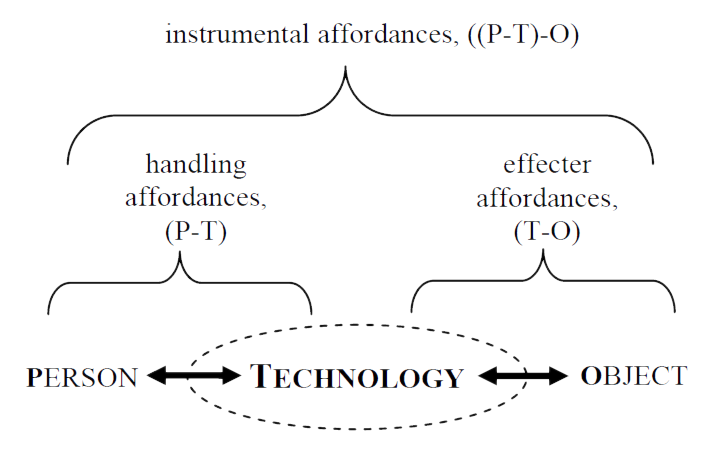A Review of Enactivist Affordances
-
- Complementarity Affording Purpose
-
Affordances: Understanding Possibilities
The realm of possible engagement with any given object consists of a set of relationships called affordances or ‘action possibilities’.
The concept was introduced by American psychologist James Gibson as part of his research in environmental psychology. From his 1979 book:
"The affordances of the environment are what it offers the animal, what it provides or furnishes, either for good or ill. The verb to afford is found in the dictionary, the noun affordance is not. I have made it up. I mean by it something that refers to both the environment and the animal in a way that no existing term does. It implies the complementarity of the animal and the environment." (p. 127)
We can think of affordances as a set of behavioral possibilities or a ‘behavior space’. As a notion it is both beautiful and useful: Thinking in affordances radically changes the conversation because it invites us to talk about the world not for what it is, but for what we can do with it. It transforms descriptions (“there is a swing in the playground”) into possibilities (“in the playground I can swing!”). To Gibson's credit, the concept accomplished much in helping people understand the world in experiential terms.
 Sample behavior spaces and affordances for a person and a cat in relation to a cardboard box.
Sample behavior spaces and affordances for a person and a cat in relation to a cardboard box.Affordances were popularized as a concept by patron saint of user-centered design Donald Norman in his classic book "The Design of Everyday Things" (originally "The Psychology of Everyday Things"). Norman's embrace of affordances, however, had a twist: Instead of using the term to refer to the set of all actions that are possible with an object, he used it to refer to the action possibilities that could be perceived by the user.
Norman's use of the term makes sense when you consider his thesis: The way in which the user engages a product can be ‘directed’ by making sure the product offers the right affordances and presents them in a way such that they can be readily inferred and understood by the user.
* Note: If you are interested in an in-depth comparison between the affordances of Gibson and Norman, you can consult this article.
The discrepancy was later resolved. Borrowing from the field of semiotics, Norman presented the concept of ‘signifiers’ in a revision of his book. Signifiers, he said, are the qualities of a product that suggest an affordance is available. From the revised and expanded edition of his book:
"People need some way of understanding the product or service they wish to use, some sign of what it is for, what is happening, and what the alternative actions are. People search for clues, for any sign that might help them cope and understand. It is the sign that is important, anything that might signify meaningful information. Designers need to provide these clues. What people need, and what designers must provide, are signifiers." (p. 14)
Signifiers matter because, with any given product, there is engagement that yields better experiences than other. Moreover, products usually require specific types of engagement to deliver the experience they were designed to deliver. Consider your ability of touching, clicking, voice-activating, pulling, pressing, or scrolling on a product; these action possibilities are built into the product ‘by design’ and it is among the responsibilities of the designer to make it so that the you will identify them. If the action possibilities designed into a product are not properly signified, a user may engage with the product in unintended ways, delivering what may be an inferior and qualitatively different experience in detriment of your brand or product.
-
Affordances: Defining Possible Engagement
Media always affords engagement, but the specific ways in which you may engage a medium are not boundless. To understand the realm of possible engagement with any given object, you have to understand the concept of affordances. It's an established term meaning the 'action possibilities' or 'behavioral options' afforded by a medium. Consider the following situation:
You are in a room a winter afternoon. You see a pot of tea next to you, giving you the option to pour yourself some. You notice a huge pillow below, which gives you the option to put it behind you to support your back. You also have the option to pour tea over the pillow and make it wet, but you would not. You find a book under the pillow, now you can read it while you enjoy your tea. There isn't a dog in the room, but if there were you'd have the option to pet him, or offer him some tea, or read him the book, or play with him using the pillow.
In every object you can see 'options'. By way of being present in your situation, every object brings at your disposal (or 'affords') a number of behavioral options. The collection of these options and possible combinations gives rise to the space of possible behavior for that situation, which is no other than the space of possible experience discussed earlier.
It's essential to distinguish between two types of affordances:
- The affordances or behavioral options offered to you directly by a surrounding object (consider the action-object pairs, grasping-stick and pressing-button).
- The affordances or behavioral options offered to you by a surrounding object when you intend to engage using a different object (consider the action-object-medium triplet, pressing-button-stick, using the stick to press a button).
The distinction is important because the latter capture the notion of using media as 'tools'. The first type can be called variably 'handling' or 'direct' affordances. The second type can be called 'effecter' or 'mediated' affordances. As discussed in Experience Delivery, the concept of affordances was introduced by J.J. Gibson and popularized by Donald Norman. Although Gibson and Norman both recognized the value of using objects as tools, the formal distinction between direct and mediated affordances may be owed to Victor Kaptelinin (University of Oslo) and Bonnie Nardi (UC Berkeley). Consider the following diagram from their 2012 paper:
 The affordances of Norman (perceived affordances) can be further categorized into handling and effecter affordances.
The affordances of Norman (perceived affordances) can be further categorized into handling and effecter affordances.
✎ Connection to
Key / Elements of New Technology Development